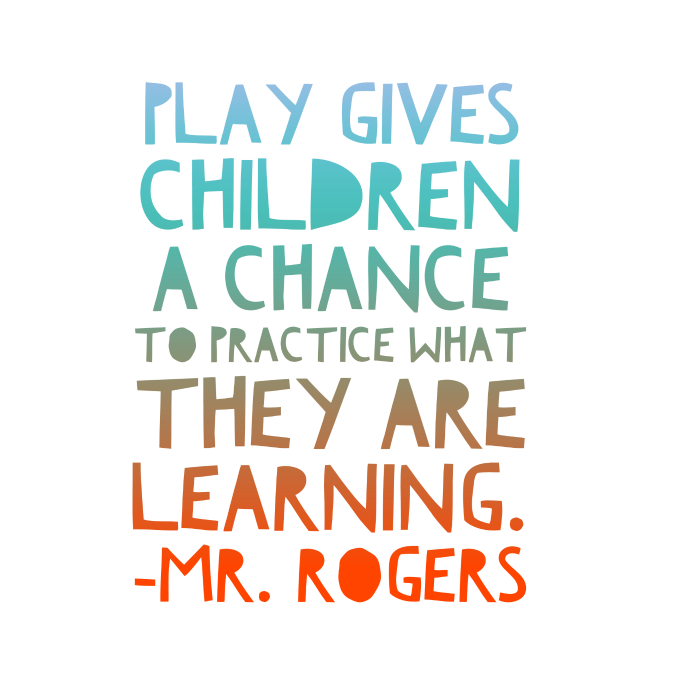To play or not to play? That seems to be the question plaguing teachers, administrators and early childhood curriculum specialists. As a kindergarten and first grade teacher for over 15 years, I say PLAY! Let them be little! However, many of my colleagues will simply respond with one word- “When?!” It is true that the kindergarten curriculum has become increasingly demanding over the last few decades. Teachers feel the pressure of students needing to master rigorous state standards in order to prove themselves on mandated assessments. Often this pressure forces teachers to “drill and kill.” How heartbreaking for a five year old to sit through that?! Developmentally it isn’t appropriate and even if the children are paying attention during these lessons they are not retaining or able to apply the information.

We must have a mindset shift in this area. Kindergarten students need to move, touch and manipulate- they learn through their five senses. They need to learn to communicate and socialize. They need to learn to love school and want to come each day! If we can adapt to teaching in this way, we will create well-rounded little people. So, how can we do this? It will be hard to change our thinking. We are creatures of habit. However, we can start small and begin to simply keep play in mind when creating our lessons. As we start to see opportunities to add playtime into our curriculum it will eventually become natural! The following ideas are ways that can help you to start to develop a play mindset: First, we must remember that the standards are what needs to be mastered and not necessarily how we need to teach. Second, we need to understand that play doesn’t and shouldn’t have to be separate from mandated curriculum learning time. Any curriculum can be made to be fun, joyful and even playful! Third, we need to think about teaching through inquiry to help achieve a play mindset. Children have a natural curiosity. We can guide and facilitate observation, exploration and experimentation into our curriculum and that can lead to play!
The authors of the book, Purposeful Play: A Teacher’s Guide to Igniting Deep and Joyful Learning Across the Day stated it perfectly when they wrote “Play is just as needed to a child as food, health, and sleep. Play is actually the work of children.” As a teacher I have noticed that children have the endurance to play for a long period of time! Yet, we struggle to help them build reading and writing stamina and then wonder why we can’t keep them engaged for more than three minutes. The answer is simple: they are not ready. They need to learn and be taught through a meaningful playtime!

Brown, S. L., & Vaughan, C. C. (2010). Play: how it shapes the brain, opens the imagination, and invigorates the soul. New York: Avery.
Mraz, K., Porcelli, A., & Tyler, C. (2016). Purposeful play: a teachers guide to igniting deep and joyful learning across the day. Porstmouth, NH: Heinemann.

